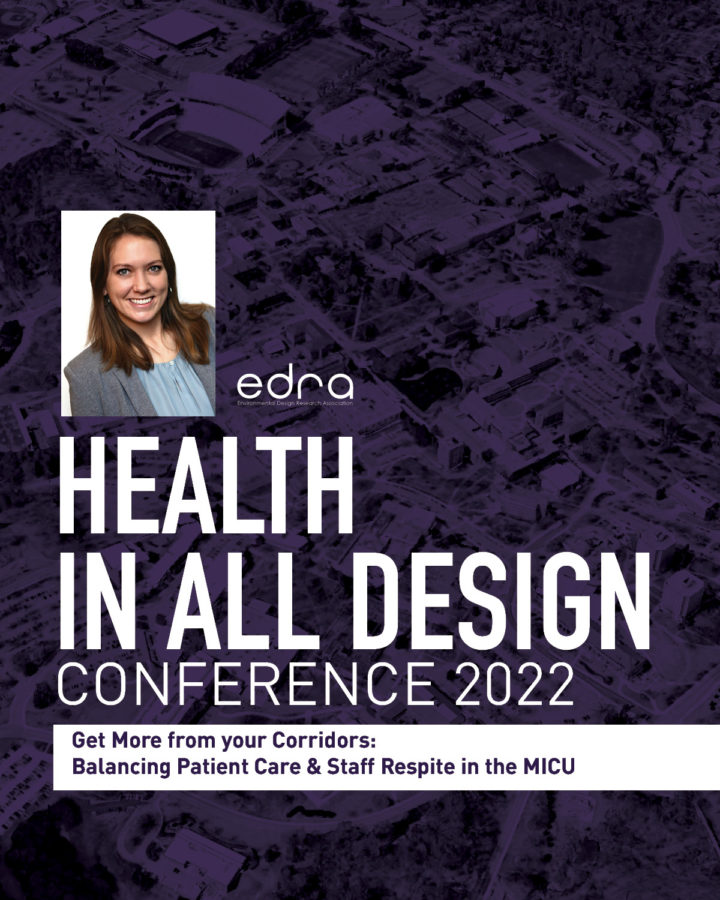Insights
Sep 15, 2022 _ insights
Get More from Your Corridors: Balancing Patient Care and Staff Respite in the MICU
Studies show that the restorative quality of break areas may significantly improve nurses’ satisfaction and stress reduction in these emotionally charged environments. But where is that supposed to occur in intense environments such as the Medical Intensive Care Unit (MICU) and especially during a pandemic?
A recent UK HealthCare/GBBN study helped define some answers, which I presented at the Environmental Design Research Association (EDRA) Health in All Design Conference in Greenville, South Carolina.

The study focused on staff culture at UK HealthCare in Kentucky and the need to provide care on the new MICU. The study’s objective was to learn design guidelines to positively transform daily MICU care while dual purposing spaces on the unit to anticipate any type of catastrophic event. However, the study also revealed ways to address staff respite.
To learn from other systems during the 2020 pandemic, the UK/GBBN research team reviewed five ICUs and five biocontainment units as case studies. We then correlated with a literature review of current trends and research areas of focus including bolstering resistance to pathogens, access control, and entry function through the built environment. Additional opportunities developed in building systems, patient areas and process, and flow procedures. Primary research methods included a staff preoccupancy survey, interviews, staff shadowing, and observations. Key themes were revealed through these methodologies including the need for staff respite and support, flexibility in the support core (staff only areas like medication rooms, clean supply, utility, etc.), and staff visibility across the unit especially for the multidisciplinary teams.
Ten built environment design guidelines were the outcome of our findings, all of which related to the hospital’s goal for flexibility. The guidelines generated opportunities for staff respite, recharging, privacy, and the ability to control sound. They were used to develop the workspace, visibility across the unit, supply standards and maximize virtual ICU capabilities. Additional pieces to consider for infectious disease and other massive events include adding a serious communicable disease lab and hot zone to the unit.
Want to learn more?
- View my presentation poster here.
- I recently presented at the Healthcare Facilities Symposium and Expo. Explore that presentation here.
- Read about our work on UK HealthCare’s Neonatal Intensive Care Unit here.
- We’re using Augmented Reality (AR) to design a better experience in the MICU at UKHealthCare’s Chandler Hospital. Learn about that here.
- Explore more of our healthcare work here.
 Kirsten Miller AIA, EDAC combines evidence-based research and user group feedback to create uplifting healthcare spaces for patients. She’s equally passionate about “providing for providers” by giving physicians, practitioners, nurses, and specialists the kind of environments where they feel energized to deliver the best care possible.
Kirsten Miller AIA, EDAC combines evidence-based research and user group feedback to create uplifting healthcare spaces for patients. She’s equally passionate about “providing for providers” by giving physicians, practitioners, nurses, and specialists the kind of environments where they feel energized to deliver the best care possible.




